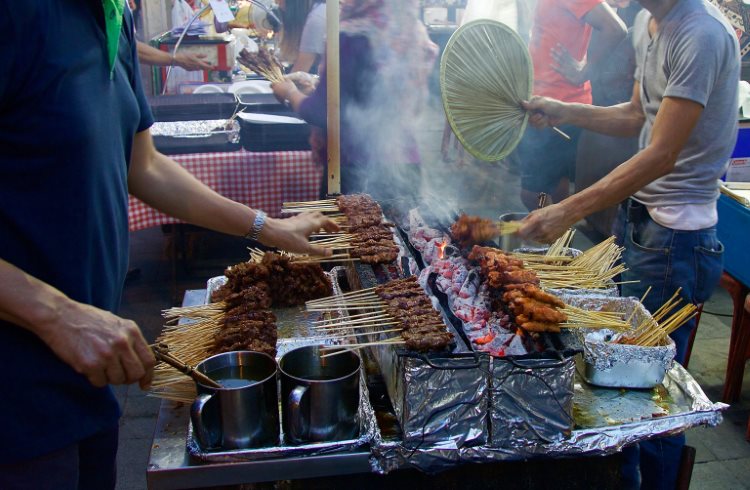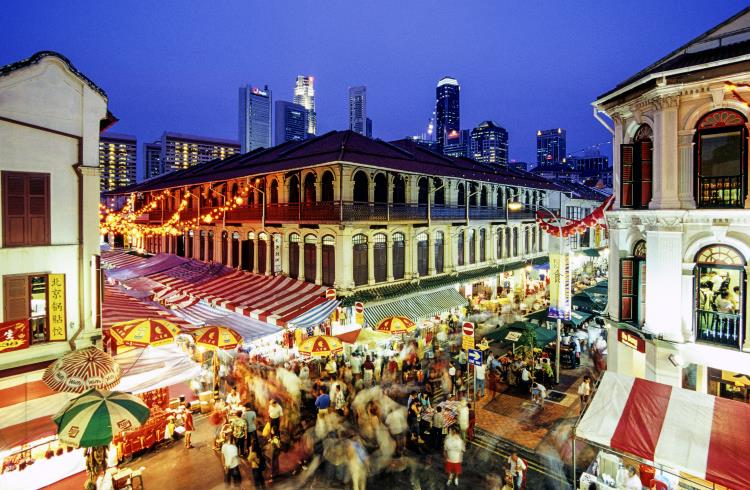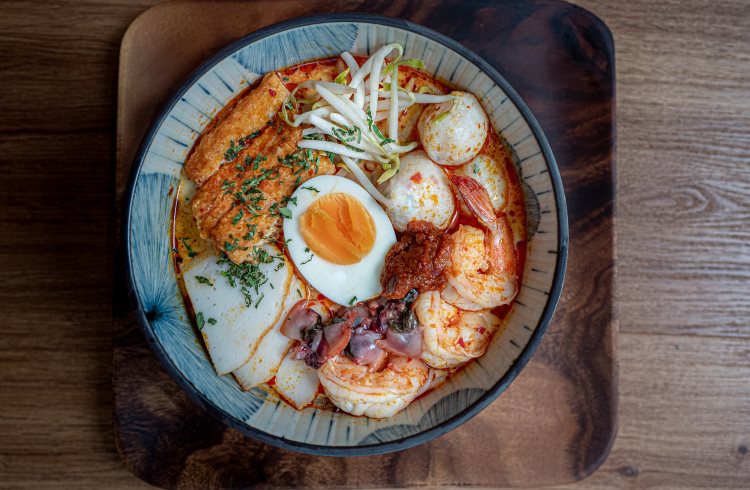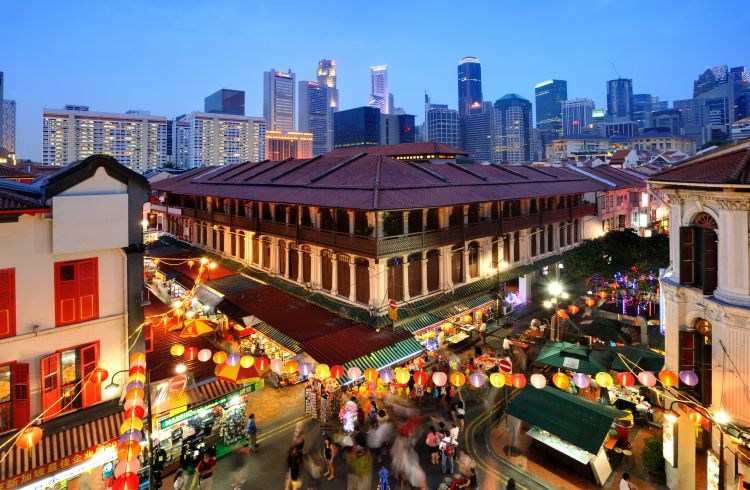Why Singapore Is Asia’s Top Food Destination
Heavily influenced by the culinary styles of China, Malaysia, and India, Singapore’s food scene is unlike any other. Nomad Ronan shares where to find the best dishes, including chili crab, Hainan chicken, and laksa soup.
 Photo © Getty Images / photography by p. lubas
Photo © Getty Images / photography by p. lubas
Asia is home to some of the planet’s most popular food: Chinese, Indian, Japanese, Thai, Vietnamese, and Malay, to name a few. Yet after nearly 10 years of living and traveling in Asia, I believe its premier food destination is not one of these countries, but rather a nation that borrows heavily from several of them. The continent’s culinary kingpin is Singapore.
Singapore’s culinary diversity
Singapore doesn’t really have a distinct national cuisine like regional neighbors Thailand or Vietnam. This is largely due to its greater ethnic diversity – of its 5.9 million people, about 74% have Chinese ancestry, followed by large populations of Malays (13%) and Indians (9%).
It follows that Singapore’s food scene is heavily shaped by all three of those countries. Comfort foods such as char kway teow (stir-fried noodles) and Hainan chicken rice originate in southern China, from which many Singaporeans can trace their ancestral roots.
Singapore’s beloved laksa noodle soup and nasi lemak (coconut-infused rice with chili, anchovies, peanuts, and a fried egg) arrived from neighboring Malaysia. There are also common Indian influences – from the fried rice dish called biryani, often served with mutton or chicken, to roti (flatbread) eaten alongside savory dishes or even as a desert, embellished by fruit or honey.
On the subject of sweets, Singaporean deserts are inspired by Southeast Asian varieties and often feature rice, jelly, fresh fruits, and either coconut or sweetened milk. Its two most famous hubs for dining are, not surprisingly, Chinatown and Little India. Both neighborhoods brim with so much enticing food, it’s a wonder Singapore isn’t plagued by obesity.

Singapore street food
Singapore is renowned for its “street food”, yet you won’t find these restaurants on the street. That’s because, in an effort to clean up its footpaths, Singapore long ago moved its street-food vendors into centralized indoor locations known as “hawker centers”.
There are dozens of these places across Singapore and, as a visitor, you’ll very likely have one a short walk from you at all times. Hawker centers are so central to the Singaporean way of life that, in 2020, they became the city-state’s first listing on the UNESCO Intangible Cultural Heritage list.
Having lived on-and-off for years in Bangkok, I love eating by the roadside, which is a cultural phenomenon in Thailand, but hawker centers are undeniably superior. Compared to the haphazard style of traditional street food, hawker centers offer better functionality, variety, and sanitation.
Typically, they’re made up of a huge cluster of dining tables surrounded by dozens of different food stalls, yet, you still pay street-food prices. Hearty meals such as roasted pork noodle or chicken rice start from $US 4 a dish. Many hawker stalls specialize in one dish, having perfected the likes of prawn omelettes, char siu BBQ pork, fish head curry, chicken satay skewers, or pork rib soup.
What to eat in Singapore
While I’m not a fan of seafood, my wife is, and when we arrive in Singapore she practically sprints to the nearest hawker stall that sells chili crab. One of the most-worshipped Singaporean dishes, it involves an entire mud crab stir-fried in a wok while immersed in a thick blend of chili, garlic, ginger, onions, tomato sauce, soy sauce, and coriander. It’s a messy, spicy and, apparently, addictive meal.
For me, meanwhile, Singapore is synonymous with laksa, a creamy curry noodle soup which in my 20s surpassed Neapolitan pizza as my ultimate food. Laksa sums up Singaporean cuisine; it’s cheap, impossibly flavorful, and benefits from a blend of cultures.
A pile of egg noodles in a coconut-infused soup brimming with chicken, tofu, and prawns, laksa originates from the Peranakans, an ethnic Chinese group who migrated to southeast Asia between the 15th and 17th centuries and intermarried with Malays, Indians, and Arabs, creating a new, blended culture. Laksa is a revered dish in Malaysia, Indonesia, and Singapore, all three of which make different versions of it. But my favorite, due to its creamier style, is found in Singapore.

The other two Singaporean dishes I daydream about are slow-cooked beef noodle soup – a light broth with egg or rice noodles and the tenderest meat – and the simple yet satisfying Hainan chicken rice. It was my father who turned me on to the latter dish after raving about the rich taste of the plain rice, which is cooked in a broth of chicken bones, garlic, ginger, and spring onion until it absorbs the flavor. Combined with slices of chicken, also cooked in a broth, it creates an incredibly basic treat that’s basically incredible.
If you’re visiting between June and September, make sure you try the odd seasonal fruit that locals crave – the stinky durian. I can’t stomach it – not just because of its pungent odor, but also its slimy texture and oniony flavor. But once again, my wife loves it and she’s a wonderful cook with a more refined palate than mine, so listen to her, not me.
Related articles
Simple and flexible travel insurance
You can buy at home or while traveling, and claim online from anywhere in the world. With 150+ adventure activities covered and 24/7 emergency assistance.
Get a quote

No Comments